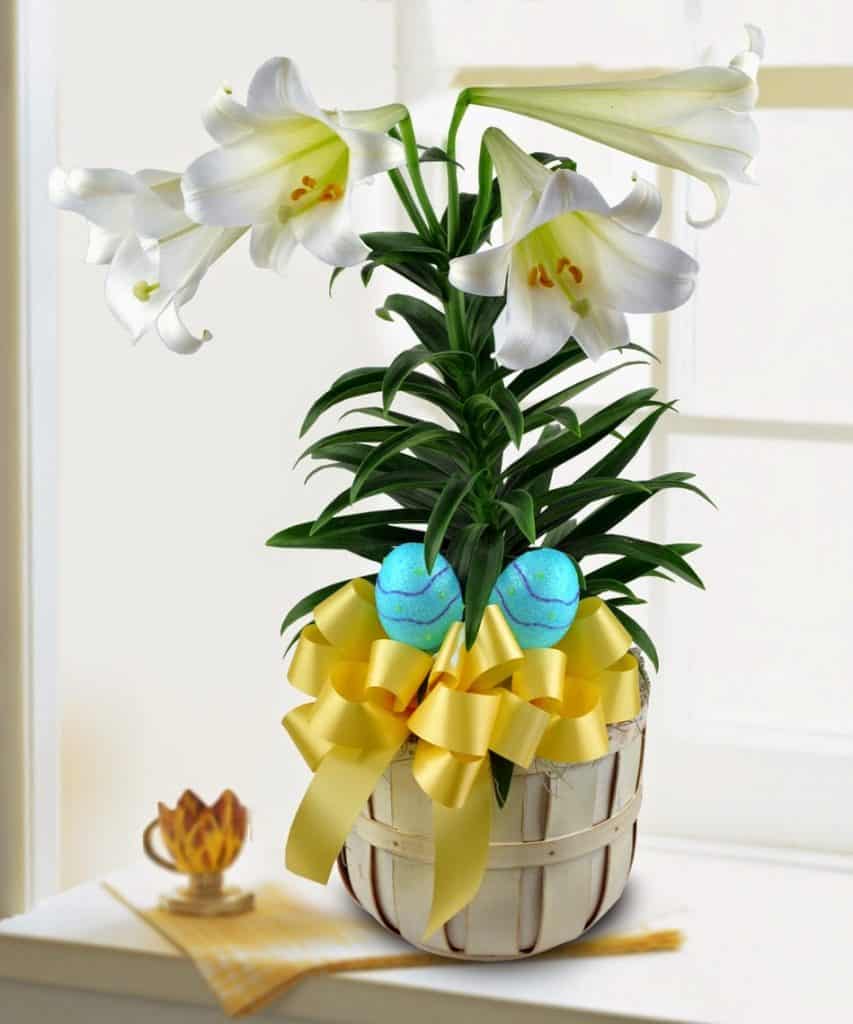The History of the Easter Lily & How It Became the Most Popular Easter Flower
Easter is almost here, and there’s only one flower that can really capture the sacred spirit of the holiday: the Easter lily!
The pure white color of this blossom has long symbolized the purity,
hope and new life of spring, and its beautiful trumpet shape makes it
the perfect herald for the fresh new season. So it’s no wonder it’s
become one of the most popular blooms to decorate homes and churches
with during this time of year. But how did this pretty little flower
come to be associated with (and even named after) Easter? Here’s the
full history of the Easter lily, for you to read while you dress up your
home in its Sunday best!
How the Easter Lily Came to the U.S.
The Easter lily was officially discovered in 1777 by Swedish
naturalist Carl Peter Thunberg in the Ryukyu Islands of Japan. After its
discovery, the flower made its way to England in 1819 and then arrived
at Bermuda in the mid-1800s. It was then named the “Bermuda lily,” but
its name was eventually changed to “Easter lily” when the
spring-blooming flower was brought to Philadelphia and popularized there
as an Easter blossom. A virus destroyed the Easter lily’s production on
the island of Bermuda, making Japan the flower’s largest producer once
again.
It wasn’t until World War I that the Easter lily started being
produced in the United States. When soldier Louis Houghton first saw the
flower, he was so captivated by it that he brought a suitcase full of
bulbs back to his home state of Oregon in 1919. Houghton started handing
out the lilies to his friends, who also happened to be horticulture
experts.
As a result, large-scale production of the flower spread across the
West Coast of the U.S., and by 1945 more than 1,000 growers in Oregon
and California were producing the bulbs, earning the region the title of
“Easter Lily Capitol of the World.” Today, Oregon and California grow
95 percent of all Easter lilies. Easter lilies are now one of the most
popular potted plants in the U.S., ranking with poinsettias, mums and
azaleas.
The Easter Lily and Christianity
Known to Christians as the “white-robed apostle of hope,” the Easter
lily has also been a religious symbol since the birth of the Christian
religion. The flower is even mentioned in the Bible quite a few times.
It is said that when Eve shed tears of remorse as she and Adam left the
Garden of Eden, white lilies sprang up where her tears fell.
Easter lilies are also admired as a symbol of motherhood and the
Virgin Mary. In artwork, she is often depicted receiving a bundle of
white lilies from the angel Gabriel at Jesus’ birth, and the flowers
were said to have been found in her tomb after her death.
The most famous biblical reference to the Easter lily is when Jesus
told his followers, “Consider the lilies of the field, how they grow:
They toil not, neither do they spin; and yet … Solomon in all his glory
was not arrayed like one of these.” It’s also believed that the lilies
grew where Jesus’ sweat and tears fell to the ground during his
crucifixion. Many churches today continue the long-held tradition and
commemorate the resurrection of Jesus by adorning their altars with pure
white Easter lilies.







